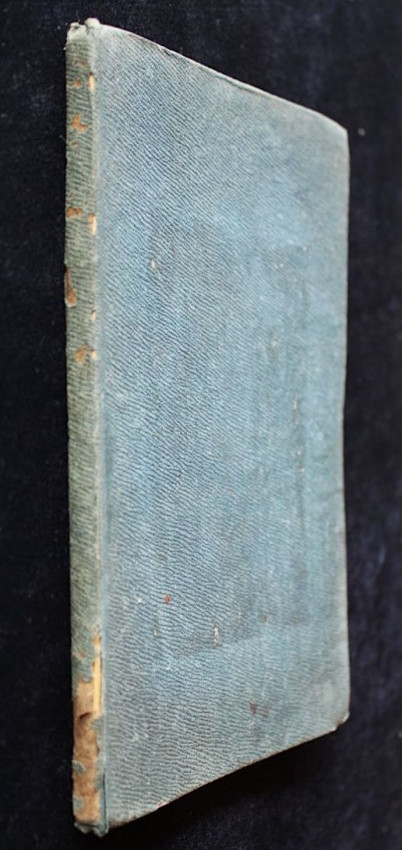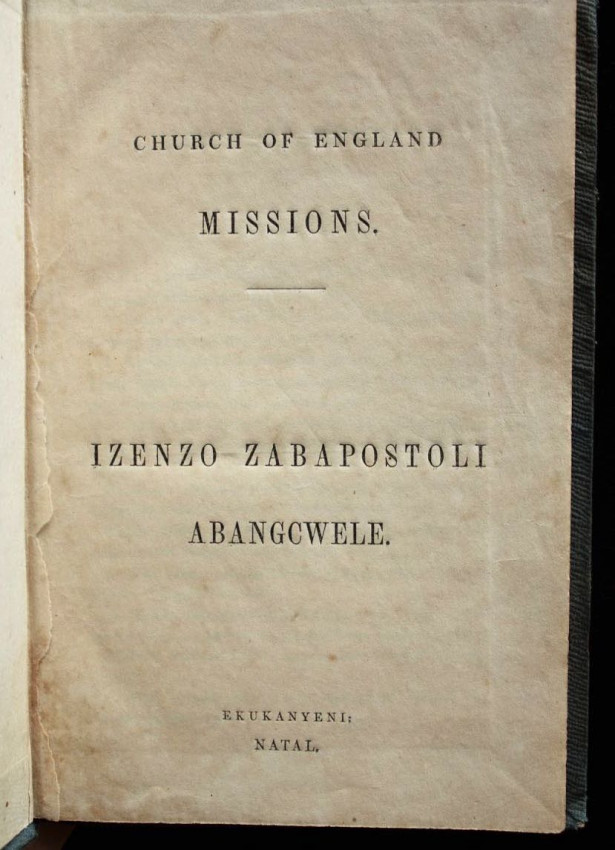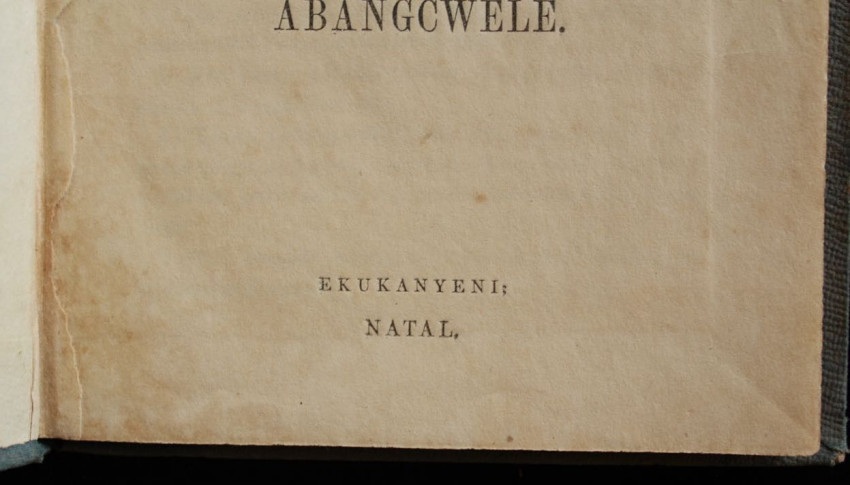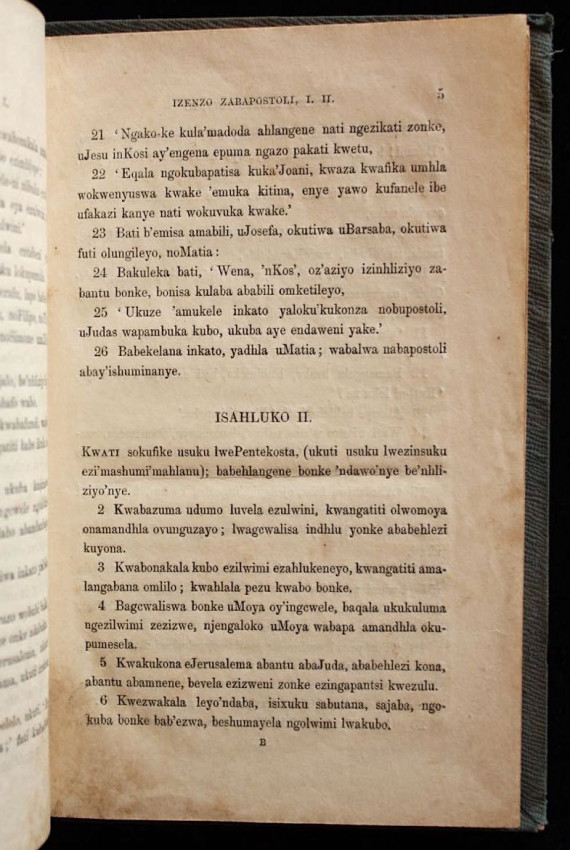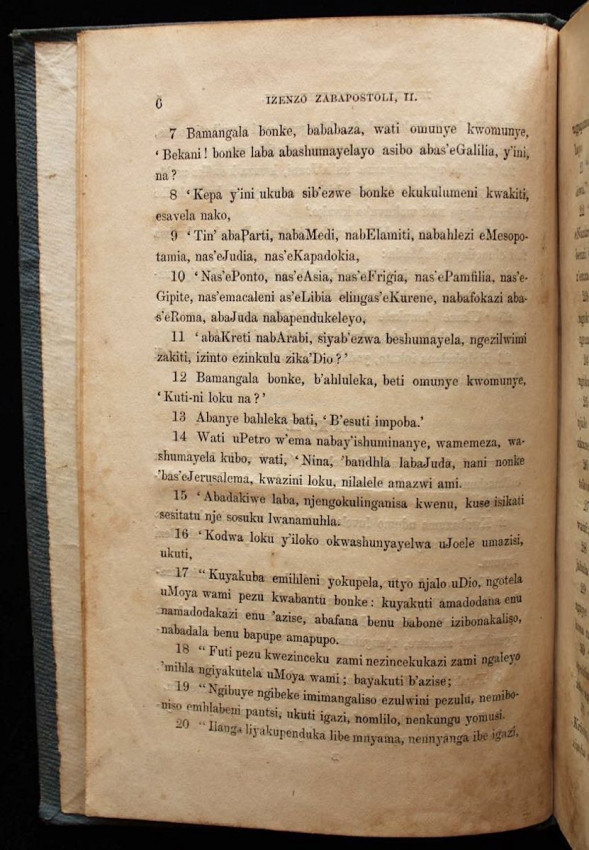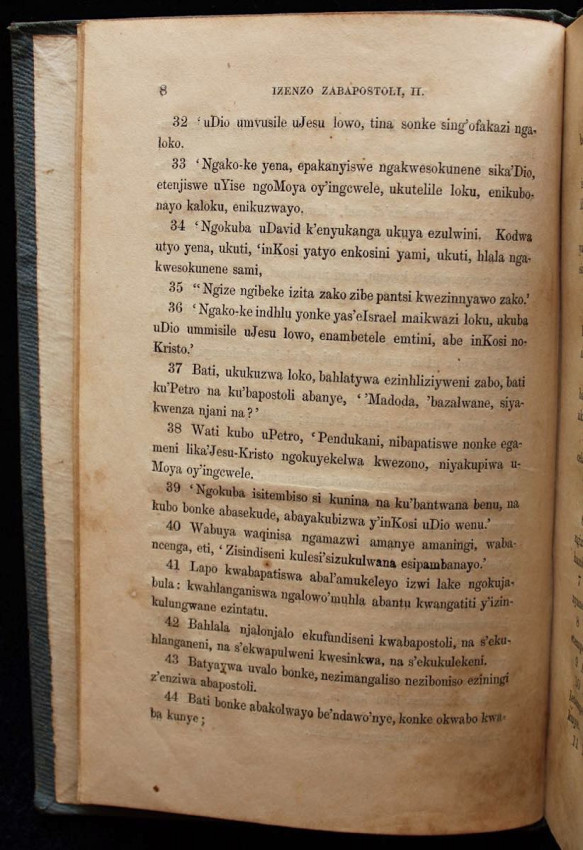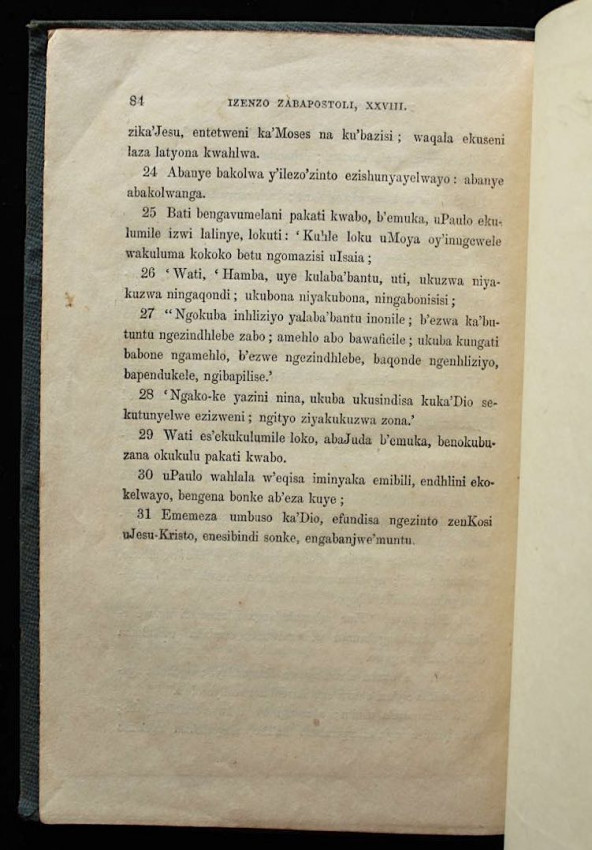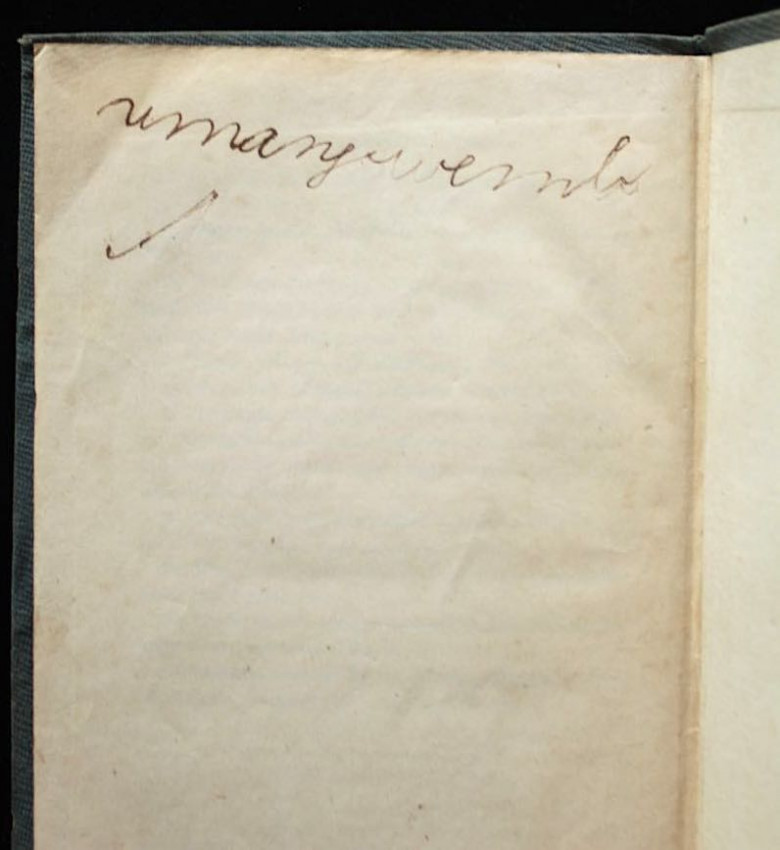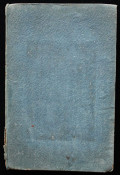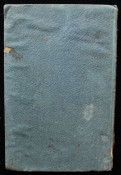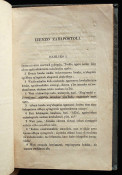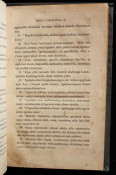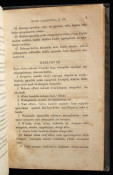Publisher's original blue cloth boards.
84pp.
An extremely scarce publication from Bishop Colenso's private printing press.
John William Colenso came to South Africa in 1855 and established the Ekukhanyeni "Place of Enlightenment" Mission Station near Pietermaritzburg. There he taught his young Zulu students religion, reading, writing and apprenticed them as printers on the press that he owned. His star pupil was a young Zulu boy named Magema Fuze who was around 12 years old when he arrived there in 1855. Fuze was immediately drawn to printing and an example of his first publication titled "Amazwi Abantu" was sent to the Cape Governor Sir George Grey in 1859. Grey was a great collector of South African antiquarian rarities which included the products of all the missionary presses from the interior parts of the country. Worldcat.org indicates only two copies of this title are located in repositories world wide, one in the South African Library and the other in the Auckland Library of New Zealand. How does one of the rarest South African publications end up in New Zealand? I think the most probable explanation is that Sir George Grey took a large part of his collection with him after his governorship at the Cape ended and donated it to New Zealand when he arrived there as the new governor. Interestingly, Sir George Grey owned two copies of Shakespeare's First Folio (1623), one he gave to South Africa and the other one to New Zealand.
Although this publication titled IZENZO ZABAPOSTOLI ABANGCWELE "The Works of the Holy Apostles" predates the publication of Fuze's first known work, published in 1859, it is most unlikely that he did not have a hand in its production when considering that he was the most gifted and enthusiastic among Colenso's pupils. Even when Colenso left Ekukhanyeni in the early 1860's to defend his claims about the Pentateuch in England, it was Fuze who continued printing religious works at the mission station. It was Fuze who first printed Colenso's commentaries on the Pentateuch in 1863 as well as his responses to his critics, which resulted in the Bishop's eventual excommunication by the South African Anglican Church. Fuze continued as a journalist long after his mentor's death in 1874 and regularly wrote articles articles for the newspapers Ipepa Lo Hlanga (1894-1904) and Ilanga lase Natal (1889-1896) on subjects ranging from Zulu history and customs, church history and Kholwa identity.
When Zulu King Dinuzulu was exiled to the island of St. Helena in 1896 it was Fuze who accompanied him as his tutor and scribe. He wrote extensively on his experiences on the island and returned to Natal with the royal family in 1898.
In 1922 Fuze's history of the black peoples of South Africa was published, titled Abantu Abamnyama "The Black People of South Africa and whence they came". It was the first major work ever written in Zulu by a native speaker of the language. It was privately published and Fuze reproached his Zulu readers for their indifference and disinterest in their history while he was looking for funding for the publication via his numerous newspaper articles.
With the publication of Abantu Abamnyama Fuze became the first Zulu historian. He can also be considered the first Zulu printer and perhaps even the first black South African printer. Many black students were apprenticed in printing at the various mission stations across South Africa long before Fuze, but it is Fuze's name that has survived because of his extraordinary output despite adverse circumstances.
Worldcat.org indicates that this work IZENZO ZABAPOSTOLI ABANGCWELE was translated by Colenso. It also indicates that the date of printing was around 1858. Colenso had by that time only been in South Africa for three years. Schutte in his work on the Missionary Presses of South Africa notes that the Bishop's approach to translation at this early stage was first to explain the context of the various phrases to his students, and then to have them repeat the phrase back to him in Zulu while he wrote it down. The complete text would then be sent to the printing press where I assume, in this instance, Magema Fuze and his fellow apprentices would be waiting.
- Sold By: Rare Paper
- Contact Person: Armandt Marais
- Country: South Africa
- Email: [email protected]
- Telephone: 0741235861
- Preferred Payment Methods: EFT, Bank Deposit. For International Customers: Paypal with 6% surcharge, International Transfer
- Trade Associations: A. A. Approved


![IZENZO ZABAPOSTOLI ABANGCWELE [1858] - an original printing from Ekukhanyeni Mission Station, Natal](https://s3-eu-west-1.amazonaws.com/antiquarianauctions/main/1760614945a1.jpg)
